PAUL KUPPERBERG pays a birthday tribute to a larger-than-life character that most readers today have forgotten…
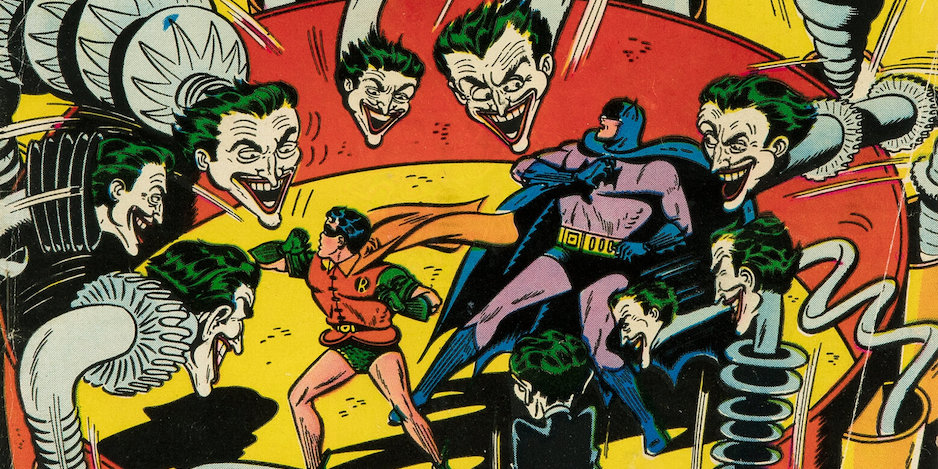
By PAUL KUPPERBERG
David V. Reed (born David Levine, December 13, 1914 – August 11, 1994) was, to say the least, a character. Here’s what I wrote about the writer in my upcoming Crazy 8 Press memoir, Panel by Panel: My Comic Book Life (coming mid-2024):
One of [the Silver Age creators I got to know during my 1977 – 1978 time on staff at DC] was David V. Reed (born David Levine, aka David Vern), then one of Julie’s writers on the Batman books. Dave and Julie were old friends from their pre-comics days in the science fiction pulps, and he had also written for the slick magazines, novels, and for TV’s I’ve Got A Secret (1952-1976) His name shows up in the acknowledgements in the liner notes of Allan Sherman’s 1963 comedy album, My Son, The Nut (1963), an album I can still sing almost entirely from memory from the repeated playings my family put it through when it was new. Dave would often hang out at my cubicle while waiting for Julie to finish with whatever he was doing, telling me stories about the olden days writing for pulps and his time in Hollywood. One afternoon, Julie had been tied up for a long time and showed little sign of being done soon while Dave waited for him, leaning on the top of my cubicle while we talked. He had a large, thick manila envelope that he was leaning on and kept shifting around. I told him he could put it down on my desk, but he said he would hang on to it, thanks.
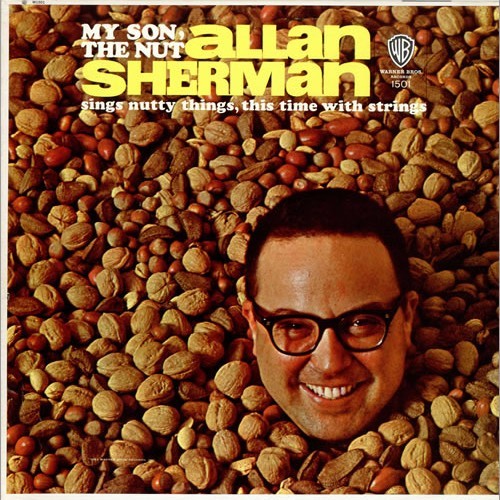
After a while, it became a running gag, so I finally asked him, entirely in jest, if he had a kilo of dope or something in the envelope. Dave smiled, looked around to check the coast was clear, then peeled back the flap to show me a large block of marijuana wrapped in many layers of Saran Wrap and said, “Nope, just a pound.” Dave was the man, I had forgotten, who when, years earlier, straight-as-they-come Julie Schwartz asked to bum a cigarette from him, gave him one of his special hand-rolled instead. I would have bought tickets, rented a tux, and hired a limo to see Schwartz stoned, but he would never consent to repeat the experiment. (I offered.)
Whatever his reputation in comics, it was mild compared to what was said about him in show business. Biographer Mark Cohen touched on Dave in his book Overweight Sensation: The Life and Comedy of Allan Sherman (Brandeis University Press, 2013): “(Allan) Sherman and (Leonid) Hambro met in New York through an alcoholic named Dave Vern, famed for his wit and talent for self-destruction. ‘Vern gave Sherman dozens of ideas,’ said Hambro. ‘His ability to be funny was unique, not like anybody else. Spontaneous, off the top of his head.’ Vern’s bits do not survive, but he seems to have been one of those Jewish neighborhood wild men like Joe Ancis, inspiration to Lenny Bruce, who preferred the ‘Spritz,’ a runaway train of verbal comedy packed with ‘timing, mugging, dialects, and sound effects.’ Sherman’s wife did not like him. ‘Dave Vern was a very bad person,’ Golden said. ‘I think Allan thought, there but for the grace of God goes I…. In the fifties he (Vern) wrote comic books.’”
* * *
Which just goes to show you: One man’s scallywag is another man’s wife’s “very bad person.”
Reed—he wrote under several pseudonyms, the best known to comics fans being David Vern and Coram Nobis—was a science fiction pulp writer in the 1940s when he was hired by DC Comics editor and former science fiction pulp magazine literary agent Julius Schwartz to write Batman, beginning with “Ride, Bat-Hombre, Ride” in Batman #56 (December 1949/January 1950). He would spend five very prolific years writing everything from superhero to supernatural to war and adventure stories and, in 1955, would disappear from comics until his 1975 return, once again writing Batman for Schwartz.

The writer spent those two decades working in television and writing prose science fiction for Amazing Stories, Fantastic Adventures, and Astounding Science Fiction, and for the more upscale slick magazines like Cosmopolitan, Good Housekeeping, Collier’s, Argosy, and Mademoiselle.
I never got to know Dave Reed well enough to discover if he really was a “very bad person,” but I read enough of his work to know he was a very good storyteller. Here then, MY 13 FAVORITE DAVID V. REED STORIES:
—
Batman #59 (July 1950). I’m sure Dave created Deadshot to be a one-shot. Who knew the character would have sustaining firepower? Art by Lew Sayre Schwartz and Charlie Paris.
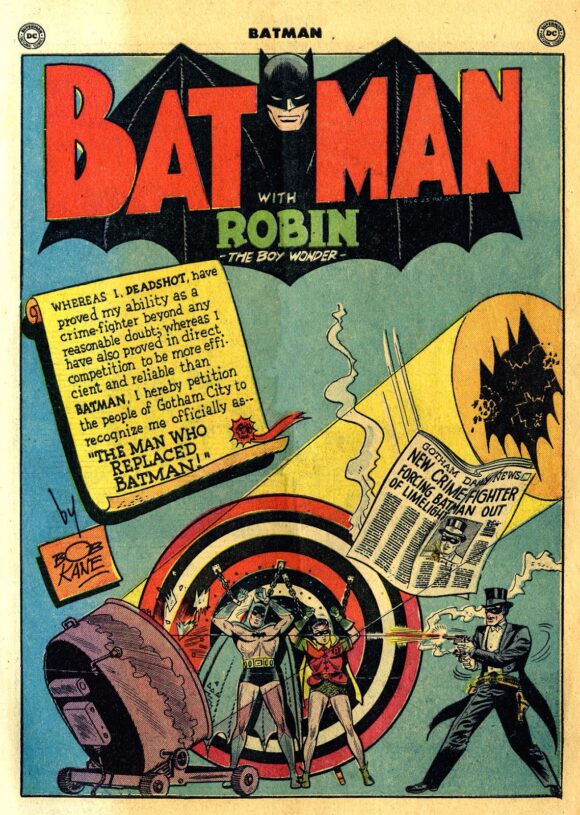
—
Danger Trail #1 (July/August 1950). “Three Steps to Mr. Sandino,” art by Frank Giacoia and Bob Lander.

—
Strange Adventures #1 (August/September 1950). “The Girl Who Couldn’t Die,” art by Paul Norris and Bernard Sachs, and a rare early credit for the writer.

—
Batman #61 (October/November 1950). “The Birth of Batplane II.” Cover by Win Mortimer, interior art by Dick Sprang and Paris.

—
Batman #73 (October/November 1951). “The Joker’s Utility Belt,” once believed to have been written by Bill Finger, would come to prominence a decade and a half later when it was adapted for an episode of Batman ’66. Art by Sprang and Paris.

—
Action Comics #169 (June 1952). “Caveman Clark Kent!” with a Win Mortimer cover and Al Plastino interior art.
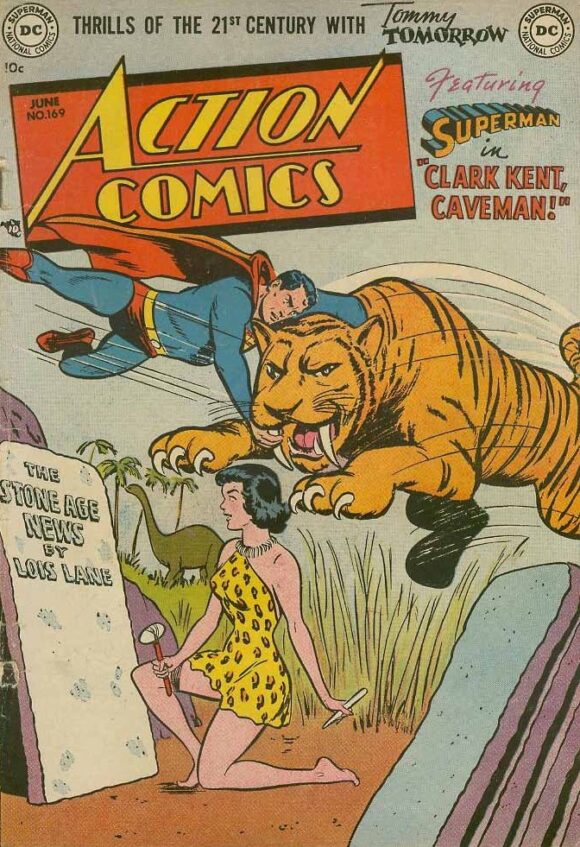
—
All-American Men of War #3 (February/March 1953). It would be another couple of years before Bernie Krigstein would produce his groundbreaking work for EC Comics, but in the meantime, he was already producing pretty darned nice stuff for Marvel and DC, like “The 60-Second Veteran.”
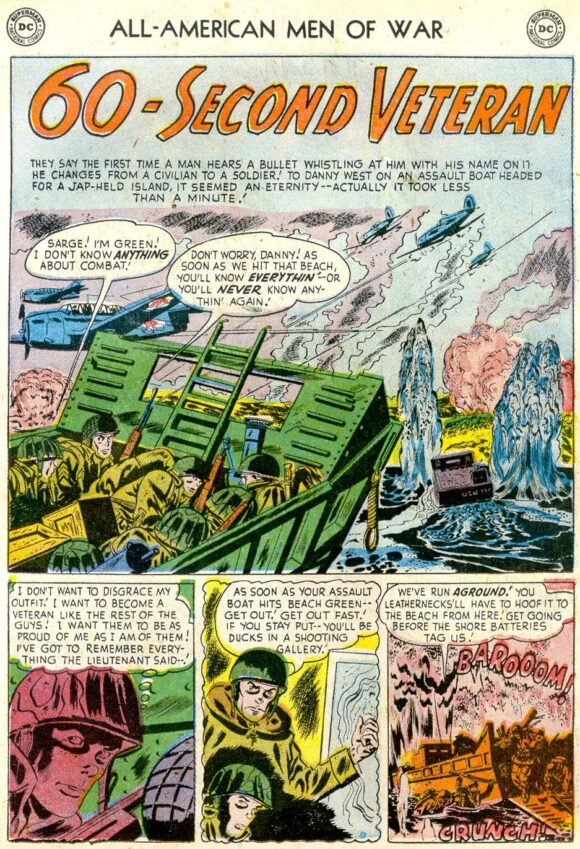
—
Batman #82 (March 1954). “The Man Who Could Change Fingerprints,” art by Sprang and Paris.
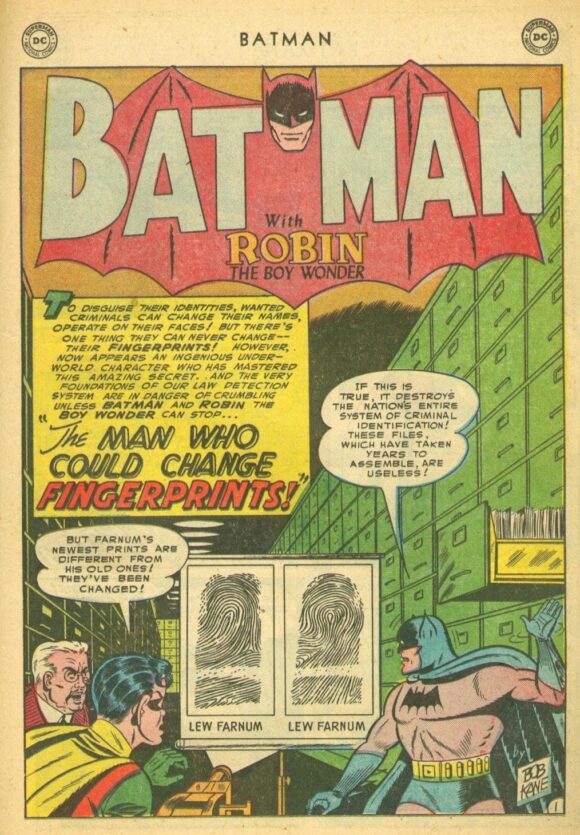
—
Plop #21 (May/June 1976). Considering his comedy background, Reed wrote very few humor stories for comics. “The Rise and Fall of Stanley Steamer,” art by Dave Manak.
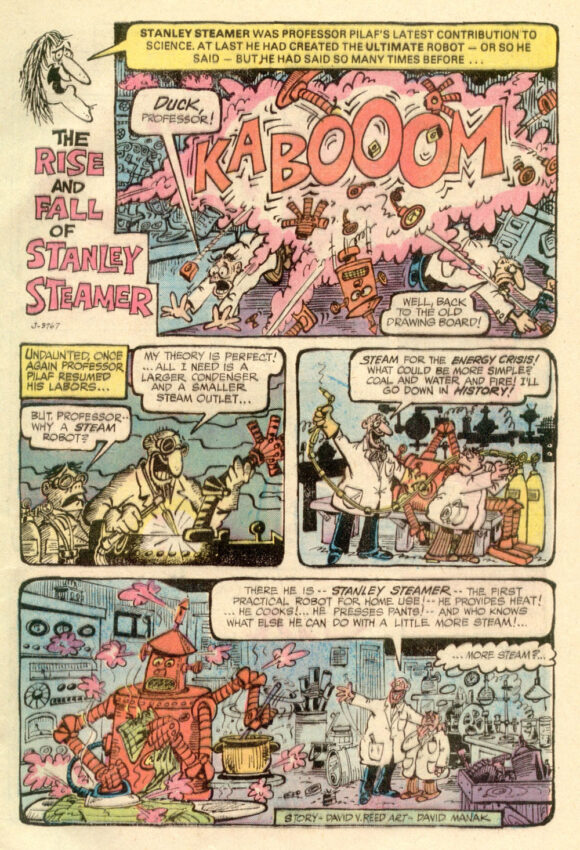
—
Batman #277 (July 1976). David V. Reed and Batman, together again! “The Riddle of the Man Who Walked Backwards,” art by Ernie Chan and Tex Blaisdell.
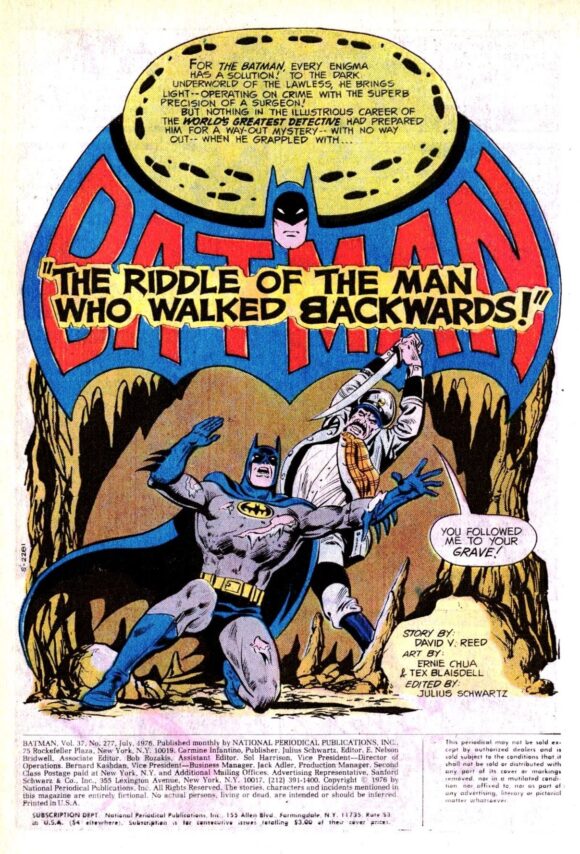
—
Batman #291 – 294 (September – December 1977). Technically, it’s four issues, but I’m counting the “Where Were You On The Night Batman Was Killed?” storyline as a single entry. The title and the titles of the other three chapters—“The Testimony of the Riddler,” “The Testimony of Luthor,” “The Testimony of the Joker”—should be self-explanatory. The art was by John Calnan and Blaisdell.

—
House of Mystery #258 (May/June 1978). For a little variety, and nice Frank Redondo art, “Once a Criminal.”

—
Batman #300 (June 1978). Old-school Batman writer meets new-school penciller Walter Simonson in “The Last Batman Story–?” Hardly! Inks by Dick Giordano.

—
MORE
— PAUL KUPPERBERG: A Comic Moment With… DAVID V. REED. Click here.
— PAUL KUPPERBERG: My 13 Favorite COMIC BOOK NOVELS. Click here.
—
PAUL KUPPERBERG was a Silver Age fan who grew up to become a Bronze Age comic book creator, writer of Superman, the Doom Patrol, and Green Lantern, creator of Arion Lord of Atlantis, Checkmate, and Takion, and slayer of Aquababy, Archie, and Vigilante. He is the Harvey and Eisner Award nominated writer of Archie Comics’ Life with Archie, and his YA novel Kevin was nominated for a GLAAD media award and won a Scribe Award from the IAMTW. Now, as a Post-Modern Age gray eminence, Paul spends a lot of time looking back in his columns for 13th Dimension and in books such as Direct Conversations: Talks with Fellow DC Comics Bronze Age Creators and Direct Comments: Comic Book Creators in Their own Words, available, along with a whole bunch of other books he’s written, by clicking the links below.
Website: https://www.paulkupperberg.net/
Shop: https://www.paulkupperberg.net/shop-1
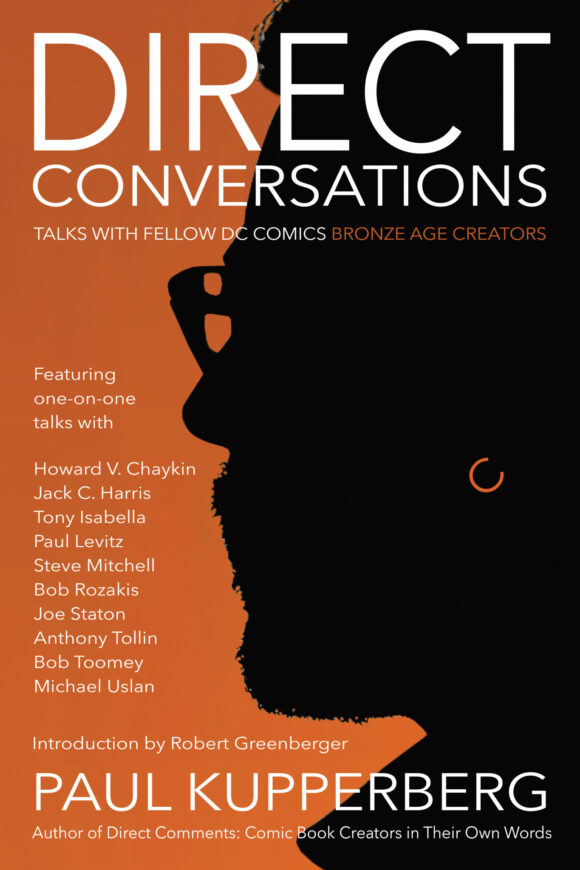

December 13, 2023
Wow! I knew nothing about this guy! (But I do have a lot of the Allan Sherman canon memorized!
December 13, 2023
I liked the David V Reed Batman stories in the late 70s. More emphasis on being a Detective. No angst or I AM BATMAN in a gravelly voice
December 13, 2023
A definite sweet spot in the Bronze Age….. loved those ‘70s stories. I especially loved the 4 issue trial of who killed BATMAN.
December 13, 2023
I recall his Underworld Olympics 1976 4-parter as a highlight of that era.
December 13, 2023
Nice article! I have most of the David V Reed Batman issues from the mid-70s, but really remember #s 276 (with the Spook) and 278 (with a here-today-gone-tomorrow baddie named the Wringer) because I was a little kid and both, for some reason, left an impression. Might’ve been the great Ernie Chan covers. But I, too, loved those issues and still go back and re-read them from time to time.
December 13, 2023
Thanks for this! I always wondered who Reed/Vern was, even though his stories rarely impressed me. Great article!
December 13, 2023
Batman #300 is one of my all time favorite issues. I remember getting it as an early Easter present. I agree with the Underworld Olympics and Testimony storylines as being highlights of my childhood. Of course, it took me years to track down the other parts!
December 13, 2023
The first comic book I ever got was a David V. Reed issue of Batman. My favorite Batman stories that Reed wrote are “The Daily Death of Terry Tremaine” from Batman 269 and “Hang the Batman” from the Batman Spectacular.
December 19, 2023
Where were the night the Batman was Killed? would be better remembered if it had better art.
John Calnan was a mediocre artist at best/
May 8, 2024
I’m still aware of him from the pulps. I have Empire of Jegga sitting half finished on my shelf. I’ve been meaning to finish. I have several other books by him that still lie unread that I will get to eventually. Not sure if I’ve read any of his Batman yarns.
July 6, 2025
I started buying Batman at the tail-end of David V. Reed’s run with #304 and the Batman Spectacular. His run on Batman was enjoyable, especially the two 4-parters, the Underworld Olympics and Where Were You on the Night Batman was Killed? And Batman #300 was incredible with Walt Simonson’s artwork. It kind of amazes me that he also wrote Batman stories back in the 50s.
July 7, 2025
Those (2) 4-parters were absolute favorites of mine. There was a lot of stress trying to make sure I picked up each installment. Normally for that reason I had stayed away from Marvel. But those had me….especially the trial to discover BATMAN’s killer.
August 11, 2025
I skipped the “Where Were You on the Night Batman was Killed?” 4-parter. I’m assuming because I didn’t like John Calnan’s artwork (it was fine on Metamorpho in Action Comics). But I remember some readers were upset when Batman was put in a room & forced to pick up a gun (I think he used it to shoot out the lights so he could escape or something) because Batman had long pledged never to shoot a gun since it’s what killed his parents.